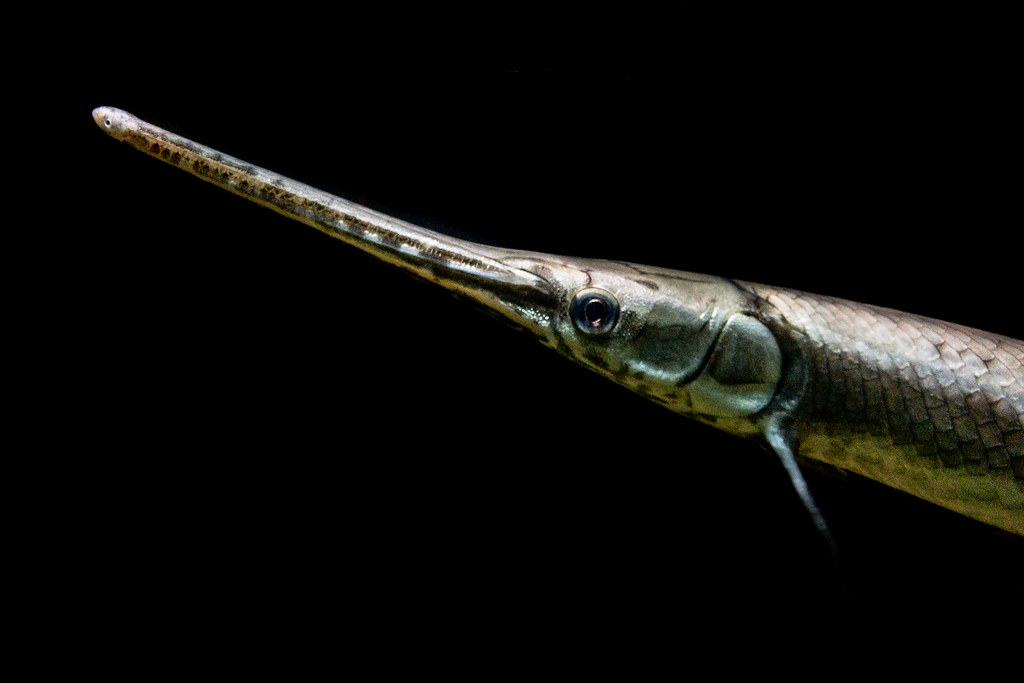Longnose Gar
Lepisosteus osseus
The longnose gar is a primitive-looking fish with a long, spotted body and a slender, beak-like snout. It lives in quiet, fresh- and brackish-water tributaries throughout the Chesapeake Bay watershed.
This section shows one large critter image at a time. Use the thumbnails that follow to select a specific image to display here.

This gallery contains a grid of small thumbnails. Selecting a thumbnail will change the main image in the preceding section.
Appearance
The longnose gar has a long, cylindrical body that varies in color from brown to dark olive, with a pale, silvery or whitish belly. It has hard, diamond-shaped scales all over its body. Dark spots appear on its back, fins and sides. It has a long, slender, beak-like snouth with sharp teeth. It grows 5 to 6 feet in length and can weigh as much as 50 pounds. Females are generally larger than males.
Feeding
Voracious feeders, longnose gar eat a variety of small crustaceans and fish, including perch, sunfish and menhaden. It hunts for its prey by lying motionless in the water until a fish passes by, then using its long jaws to snap onto prey and swallow it headfirst.
Predators
The longnose gar has no major predators due to its heavy armor of hard, thick scales. It may be preyed upon by fish-eating birds such as ospreys.
Reproduction and life cycle
Spawning occurs in May to June in shallow, weedy fresh waters. Several males often approach one female, who eventually settles on a spawning area. The female lays large, sticky, green eggs that are extremely poisonous to humans, animals and birds. Females can lay 30,000 eggs per year. After laying eggs, both parents leave the nursery area; they do not care for their eggs. If the female lays her eggs in another fish’s nest, that fish may care for the gar eggs in addition to its own. Males mature at 3 to 4 years old, while females mature at 6 years old. Longnose gar can live up to 20 years.
Did you know?
- Gars have existed since dinosaurs roamed the earth, before most of the fish we know today had evolved.
- Part of the longnose gar's scientific name, Lepisosteus, means "hard-scaled."
- Longnose gars are able to breathe air from the atmosphere. In summer, when dissolved oxygen levels are low, gars will often lie motionless near the surface of the water and take in air.
Sources and additional information
- Fishes of Chesapeake Bay by Edward O. Murdy, Ray S. Birdsong and John A. Musick
- Life in the Chesapeake Bay by Alice Jane Lippson and Robert L. Lippson
- The Virtual Aquarium: Longnose Gar – Virginia Tech
- Maryland Fish Facts: Longnose Gar – Maryland Department of Natural Resources
- Animal Diversity Web: Lepisosteus osseus – University of Michigan Museum of Zoology
